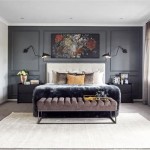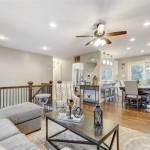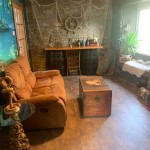How To Decorate a Room with Lights
Lighting plays a crucial role in setting the mood and ambiance of a room. It can transform a space from dull and uninspired to warm, inviting, and visually captivating. By strategically incorporating different types of lighting, you can highlight architectural features, create visual interest, and enhance the overall aesthetic appeal of your room. This article will explore various approaches to decorating a room with lights, providing practical tips and ideas to illuminate your space with style.
Embrace the Power of Ambient Lighting
Ambient lighting serves as the foundation of any room's illumination. It provides a general, overall brightness, creating a sense of comfort and functionality. Common sources of ambient lighting include ceiling fixtures, chandeliers, and floor lamps. When selecting ambient lighting, consider the size of the room and desired level of brightness. For larger spaces, multiple light sources may be necessary to ensure adequate illumination. Consider using dimmable light bulbs to adjust the brightness according to your preferences and activities.
For example, a large living room with high ceilings may require a combination of a central chandelier and strategically placed floor lamps to distribute light evenly. In a bedroom, a soft, warm glow emanating from a ceiling fixture can create a relaxing atmosphere conducive to sleep. When choosing ambient lighting, it is important to select fixtures that complement the existing decor and architectural style of the room. Experiment with different shapes, sizes, and materials to find the perfect fit for your space.
Accentuate with Task Lighting
Task lighting provides focused illumination for specific activities, enhancing visibility and functionality in designated areas. This type of lighting is essential for tasks that require precision and concentration, such as reading, working, or applying makeup. Common sources of task lighting include desk lamps, under-cabinet lights, and wall sconces.
When selecting task lighting, consider the specific activities you plan to perform in the area. For example, a desk lamp should provide bright, white light for reading and writing, while under-cabinet lights can illuminate countertops for food preparation. Task lighting is particularly useful in kitchens, home offices, and bathrooms where efficient illumination is essential. The placement of task lighting is key to its effectiveness. Ensure that the light source is positioned directly above or beside the designated work area, providing focused light without creating glare.
Elevate the Room with Accent Lighting
Accent lighting adds a touch of drama and visual interest to a room, highlighting specific features and creating a layered lighting scheme. This type of lighting can transform ordinary spaces into extraordinary ones by showcasing artwork, architectural elements, or decorative objects. Accent lighting can be achieved using a variety of sources, including recessed lights, track lighting, and spotlights.
For example, a spotlight directed towards a painting can draw attention to the artwork and create a focal point in the room. Recessed lights strategically placed around a ceiling cornice can add depth and dimension to the space. Accent lighting can be used to highlight specific areas, create visual pathways, or simply add a touch of elegance to the overall design. When using accent lighting, it is important to consider color temperature and bulb type to ensure that the light complements the objects being illuminated. Warm white light often works best for accentuating artwork, while cool white light can highlight architectural details.
Consider Colour Temperature for Mood
Beyond the type of lighting, colour temperature also plays a crucial role in creating the desired mood and ambiance. Light is measured in Kelvin (K) with lower Kelvin numbers representing warmer colours.
Warm white light (2700-3000K) emits a yellow hue, often associated with comfort, relaxation, and coziness. This type of lighting is ideal for living rooms, bedrooms, and dining areas, creating a calming and inviting atmosphere. Cool white light (3500-4100K) has a more bluish tint and is often used in kitchens, bathrooms, and offices, providing a crisp and focused illumination. Daylight bulbs (4500-6500K) simulate natural daylight, offering a bright and energizing effect. These bulbs are often used in workspaces or areas where a bright, clear white light is preferred.
When selecting light bulbs, consider the desired mood and functionality of the space. For example, a bedroom may benefit from warm white light to promote relaxation, while a home office might require daylight bulbs for optimal work performance.
Creating Layered Lighting Schemes
To achieve a well-balanced and visually appealing lighting scheme, it is important to incorporate multiple types of lighting, creating layers of illumination. This approach allows you to adjust the brightness and mood of the room based on your preferences and activities.
A layered lighting scheme typically includes ambient lighting for overall brightness, task lighting for specific areas, and accent lighting for showcasing specific features. By incorporating all three types of lighting, you can create a dynamic and versatile space that can adapt to different needs and moods. For example, in a living room, you might use a combination of a ceiling fixture for ambient lighting, table lamps for task lighting, and spotlights for accentuating artwork or architectural details.

Pin On Random

How To Decorate Fairy Lights In Bedroom Beginner S Lighting Guide

Pin On Room

Pin On Interior Decor

How To Decorate Your Kids Room With Fairy Lights Petit Small

Pin On Bedrooms

45 Inspiring Ways To Decorate Your Home With String Lights

Room Light Decoration Interior Design Decor Tips

38 Cozy Decor Ideas With Bedroom String Lights

Kids Room Lighting Ideas That Will Spark Joy Blisslights
Related Posts







